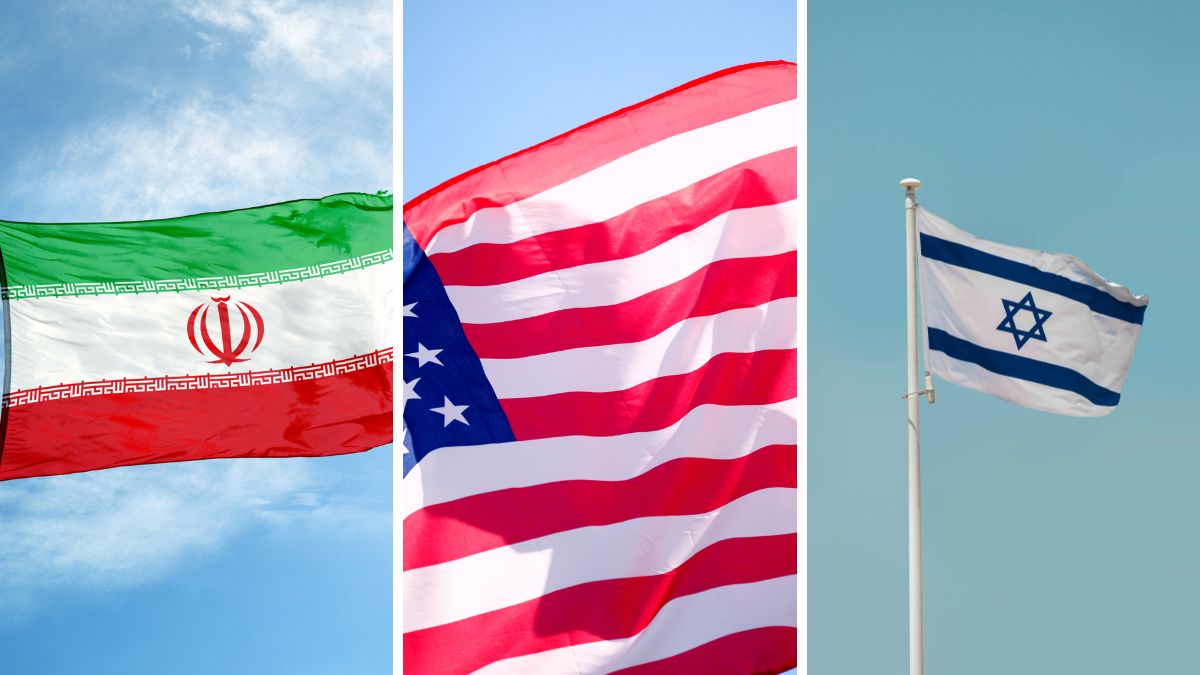Washington, D.C.: The war may be over for now, but the battle to prevent Iran from becoming a nuclear weapons state is far from done. While U.S. and Israeli strikes may have temporarily set back Iran’s alleged atomic weapons program, the country is still believed to possess the technical capability to build a bomb—if not in months, then in years.
Israel claims Tehran’s nuclear progress has been delayed by several years. The U.S. also says its strikes obliterated Iran’s heavily fortified Fordo nuclear enrichment facility, deep inside the mountains. But multiple assessments vary in their conclusions about the actual success of the 12-day war that began on June 13.
📌 Full Coverage: The Iran–Israel–US Standoff
Conflicting Claims on Success
The CIA Director has stated that U.S. strikes severely damaged Iran’s nuclear infrastructure and delayed its program by years. However, a leaked preliminary intelligence report from the Pentagon’s own defense agency told a different story—saying the damage may have delayed Iran’s nuclear program by only a few months.
President Donald Trump dismissed the leaked report, insisting the U.S. “obliterated” Iran’s nuclear facilities and that the program is now effectively destroyed. The administration emphasized that the leaked assessment was “low confidence” and outdated.
Trump added that while talks are scheduled between U.S. and Iranian officials next week, a new nuclear deal may no longer be necessary because the Fordo, Natanz, and Isfahan sites have been “taken out.” Still, the leaked Pentagon report maintains that some core components of Iran’s program may have survived the strikes.
Israel’s nuclear agency supports the view that the strikes were successful, claiming Iran’s ability to develop a nuclear weapon has been set back significantly. Israel launched its attacks after Prime Minister Benjamin Netanyahu publicly stated that Iran was “very close” to building a bomb. Israel continues to view Iran as an existential threat and has been in a shadow conflict with the country for decades.
Ceasefire Holds, but Doubts Remain
The 12-day conflict concluded on June 24, when Trump announced a ceasefire between the two nations. Initial post-ceasefire tensions surfaced when Israel accused Iran of launching missiles in violation of the agreement, which Tehran denied. Israeli warplanes were briefly deployed before Trump publicly criticized both nations—particularly Israel—for nearly breaking the ceasefire.
Interestingly, the ceasefire announcement came just hours after Iran carried out a symbolic retaliation by firing missiles at the U.S. Al Udeid Air Base in Qatar. All missiles were intercepted, and both Qatar and the U.S. later confirmed that Iran had warned them in advance.
For now, the ceasefire appears to be holding, with both countries reportedly shifting focus toward assessing infrastructure damage and beginning reconstruction efforts.
What the Satellite Images Show (and Don’t)
High-resolution satellite images of Fordo, Natanz, and Isfahan reveal massive surface-level impact. But analysts caution it’s difficult to verify if these underground facilities—especially Fordo, buried beneath a mountain—were truly obliterated.
Israeli intelligence sources suggest the strike on Fordo was “not satisfactory,” and that the damage may fall short of initial claims.
There are deeper concerns, too. Iranian officials assert they still retain the technological capacity to restart the program if needed. Reports indicate that Iran may have moved enriched uranium out of Fordo before the strikes.
Rafael Grossi, head of the UN nuclear watchdog, confirmed Iran likely relocated a significant portion of its highly enriched uranium ahead of the U.S. attack. He also noted that Tehran continues to possess both the industrial capacity and scientific expertise to rebuild its nuclear infrastructure.
Mixed Signals from Iran
While Iran’s foreign ministry now admits that its nuclear sites were heavily damaged by U.S. strikes, that statement contradicts earlier claims from Iranian officials. One senior advisor had previously said that “no irreversible damage” occurred at Fordo. A state media executive added that all materials were evacuated ahead of time, minimizing the damage.
So why the sudden shift in tone from Iran?
Some experts believe it could be a strategic ploy to downplay Iran’s nuclear ambitions on the world stage—creating a false sense of relief while quietly rebuilding behind the scenes.
What Comes Next?
For Trump and Israel, any suggestion that Iran’s nuclear capabilities are still intact creates political and strategic challenges. If Iran resumes its program, both nations may feel compelled to launch further military action—risking a wider conflict in the region.
That next chapter could easily involve other players, including nations that may back Iran directly or indirectly. For Trump, any prolonged involvement could alienate his domestic base, especially after campaigning on a platform of avoiding foreign wars.
While the U.S. and Israeli strikes clearly damaged Iran’s nuclear infrastructure, the world still doesn’t know the full extent of what was achieved. Was the program set back by months? Years? Or has it simply moved underground—again?
A conclusive answer may still be months away.







